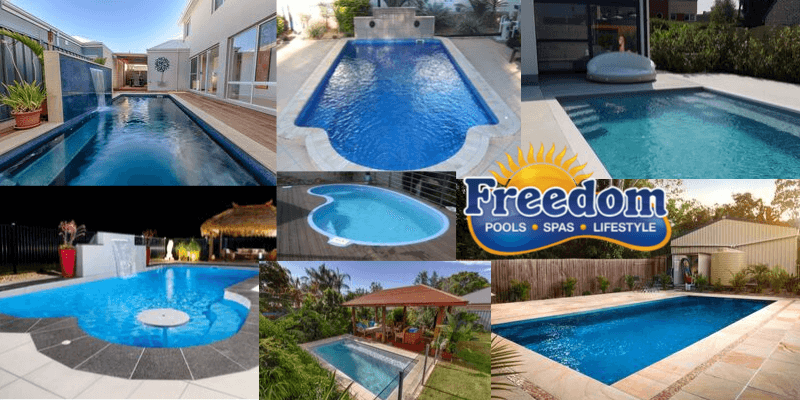If you are thinking about buying a swimming pool, you will be interested to know the essential steps to take to avoid making a mistake. Here, we tell you everything you need to bear in mind.
There are various factors that influence the purchase of a swimming pool, and various procedures you need to be aware of, so let us start.
15 tips before buying a swimming pool
1) Swimming pool installation company
To guarantee the installation and to be able to make a legal claim should problems arise, we should always choose specialist companies with their own premises and they should be local to where the swimming pool is going to be installed.
2) Quotation for the Construction of Swimming Pools
The company should always make a prior technical visit to prevent significant price fluctuations. It is advisable to sign a contract, paying special attention to the small print to avoid surprises. The most logical way is for it not to include permits, projects or excavations, which will be evaluated according to the conditions of each case, although they should be specified in the clauses of the contract.
3) Legal Procedures for Constructing a Swimming Pool
Prevailing regulations in Spain being the most permissive of the EU, official procedures are usually quick and easy. A technical project for the swimming pool should be presented to the corresponding Town Hall. The basic requirements for the works licence vary according to each Town Hall.
4) Choosing the right moment
As in all sectors, the low season may offer an improvement to the installation price due to scant demand. Autumn and winter are the best times for constructing the swimming pool, taking advantage of the decline in work caused by low demand.
5) Orientation of the Swimming Pool
To optimise the functioning of the swimming pool, and to take advantage of the highest possible number of daylight hours, the best orientation is to the south or the west. With respect to the hydraulic circuit, the skimmers and the technical unit, these should always be installed in the opposite direction to the prevailing wind.
6) Basic Swimming Pool equipment
The following elements should be installed built into the shell for their correct operation:
- Skimmers
- Blow-down valve
- Impulsion nozzles
- Vacuum point
- Led spotlights
7) Add-on equipment
Optionally, we can equip our swimming pool with many elements both inside the shell as well as outside it, which transform our swimming pool into a real oasis.
Interior Equipment
- Air, water or spa type jets
- Swim Jets (against the current system)
- Nozzles for heating the swimming pool
- Automatic cleaning system for the swimming pool floor
Exterior Equipment
- Water cannons for massage
- Water features
- Handrails
- Metallic steps
- Slides
- Others
8) Filtration system
The filtration system should not be installed more than 15m away from the swimming pool, since this would have a significant effect on its correct operation. It may be concrete or prefabricated, in an enclosed, ventilated space.
It is advisable to install this technical unit on raised ground to avoid flooding due to torrential rains or poorly executed downspouts.
9) The shape of the Swimming Pool:
These days we can find prefabricated swimming pool in all shapes and colours imaginable; rectangular, round, oval, L-shaped… Finishes are also very varied, but bear in mind that the colour of the water will vary according not only to solar or artificial light, but also the finish of the swimming pool itself. Our Marble Tech™ finishes give the water a unique appearance. You can find out about them here.
10) Protection
Protecting the swimming pool from the environment itself is especially important for its maintenance. The wind pollutes the swimming pool with leaves and dirt and causes water loss. Avoid deciduous trees or bushes so you do not have to pick the fallen leaves out of the water each change in season.
In the case of concrete swimming pools, trees should not be planted nearby since the roots may crack the floor or walls, which would cause water leakage and ground movements.
11) Swimming pool location and clay soil
Clay soil may present structural problems. To find out about details to be borne in mind about installing a swimming pool in a clay soil plot, visit How to install a swimming pool in clay soil plots.
12) Distance of a swimming pool in relation to the House
This is another question many people ask themselves before buying a swimming pool. The truth is that there are no safety or technical reasons that indicate how far away a swimming pool should be installed, in fact, they are for personal reasons or reasons of convenience.
Near the house carries with it the inconvenience of access to the house and the resulting dripping of water if we have just used the swimming pool, although it is more convenient because we will be within easy reach of the bathroom, kitchen, shade to take refuge under…
The ideal is to have a barbeque area equipped with bathroom, kitchen, relaxation area, shade and a changing room near the swimming pool so you do not have to use the house.
13) The family in the swimming pool
The swimming pool is designed to last for many years, maybe a lifetime, and so we should not only think about our current family situation, but also about the one to come. Children who become teenagers with guests, families that grow, babies that are born… one for all audiences is the perfect one.
14) A pool for swimming or having fun
The swimming pool should be designed bearing in mind the activities one wants to undertake in it, both in the present as well as the future. Nowadays, it is not necessary to build a swimming pool for swimming as there are many options for swimming against the current on the market.
The ideal is the concept of a swimming pool as a space reserved for bathing, relaxing and having fun; this concept allows the pool to be enhanced with natural or artificial rocks, water features, fountains, planters, spas, hydro massage, cannons and all sorts of enhancements.
15) Swimming Pool Measurements
The measurements depend on the space we have available and the use we make of it, but it should be borne in mind that the bigger it is, the more it will cost to maintain.
In the measurements section, we can find sizes for all tastes and budgets, linked, in turn, to the depth of the shell.
Swimming pool depth and floor
The springboard trend has passed, surely because, in the past, swimming pool builds provided depths of 3 metres or more, a trend that has changed over the years, transforming swimming pool depths to no more than 1.5 or 2 metres, with the resulting saving in water, electricity and chemical products to treat it.
Touching the bottom of a swimming pool, as well as being a safety bonus, also makes it more fun, which is why many swimming pool floors these days slope very little or are totally flat.
Types of swimming pool floors
Flat Floor: This is what we have just described whereby there is barely any slope, and it therefore has the same depth throughout.
Sloping floor: Starting from 50 centimetres, a progressive slope starts down to the desired depth. We therefore have a shoreline and a deep end.
Spoon floor: The first part of the swimming pool is sloped, but the spoon-shaped incline guarantees a maximum depth in the plunge zone.
U-shaped floor: Let us say that there are two shorelines since the deepest part is in the centre of the swimming pool.
We hope that we have helped you to make a better choice about the type of swimming pool you need, and it goes without saying that we are here to clear up any doubts you may have.

